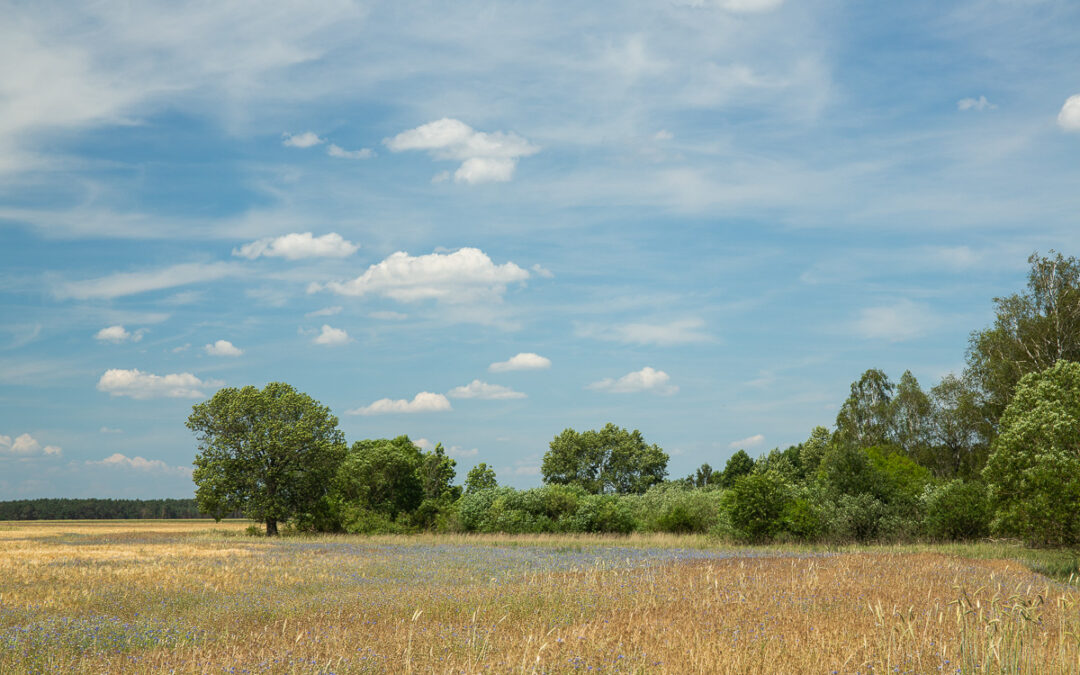
Are agri-environmental measures effective in protecting farmland birds?
We assessed the effects of two agri-environmental measures targeting cropland birds implemented by three farmers collectives in the Netherlands. Results show positive effects on the abundance of birds and total number of bird species. However, our results show that some species do not benefit from the implemented measures. Building on these results, the study provides recommendations for the future implementation of AEMs targeting cropland birds in the Netherlands and beyond.
Are agri-environmental measures effective in protecting farmland biodiversity?
A significant share of the CAP budget (in 2020: 17.6%, i.e. 2.5 billion euros) is funding agri-environmental measures (AEM) to protect among others farmland biodiversity. However, past studies on the effectiveness of these measures have shown mixed results. Measures may fail because of inadequate management prescriptions or because insufficient habitat is created at suitable locations. Since farmland species differ in their habitat needs, simple all-around solutions are unlikely to work. In the Netherlands, the collective approach for AEMs was adopted in 2016 partly to address these challenges and to achieve an effective management at suitable locations. In particular, farmers collectives aim to increase the concentration of measures in favorable areas for targeted species. After only six years of implementation, evaluation of the ecological effectiveness of the collective approach is just starting. Our study contributes to this evaluation.

Figure 1: Location of plots with bird observations (in red) (Grondard et al., 2023).
Study objectives and methods
In this study, we assessed the effects of two types of measures targeting cropland birds: bird plots (vogelakkers) and field margins (kruidenrijk akkerranden). Measures were implemented by collectives in the provinces of Groningen, Drenthe and Flevoland between 2017 and 2020. We compared bird abundance on AEM plots with measures, and control plots with conventional practices (see Fig. 1). However, differences in bird abundance between AEM and control plots may be due to other factors than plot management. For instance, a plot located in an open landscape is likely to host a higher number of skylarks than a plot surrounded by forest areas, irrespective of plot management practices, because skylarks breed in open landscapes. Therefore, to uncover the effect of measures, we took into account the effect of landscape characteristics around plots. Furthermore, we assessed if AEM plots located next to each other had a higher bird abundance than isolated AEM plots, to assess the effect of spatially concentrating measures.
Positive effects on four out of seven target species, total number of species and total number of birds
We analysed seven target species individually, the total number of species and the total number of birds (See Fig. 2). Compared to control plots, field margins hosted a higher number skylarks, yellowhammers, common linnets and common kestrels as well as a higher total number of species and birds. Benefits of bird plots were limited to skylarks and total number of birds. The three other species (western yellow wagtails, northern lapwings, Eurasian oystercatchers) did not benefit from any of the studied measures. Landscape characteristics were an important factor explaining the abundance of birds. Species nesting on the ground avoided landscapes with vertical structures (trees, buildings), which was not the case of species nesting in boundary features. AEM plots located next to each other did not have higher bird abundance than isolated AEM plots: yellowhammers abundance was even lower.

Figure 2: Predicted number of individuals per plot for each of the seven studied species and total bird abundance, and predicted species richness per plot, for control plots, field margins and bird plots. B = species nesting in boundary features (hedges, ditches and trees), G = species nesting on the ground. Vertical bars correspond to 95% confidence intervals (Grondard et al., 2023).
Next steps for Dutch AEMs targeting cropland birds
- Monitor the quality of habitat created by AEMs: to understand better why field margins and bird plots have different effects on certain species and thus to be able to improve the effects of the measures, it is useful to complete the monitoring of AEMs with observation on the habitat quality created by the measures, such as vegetation structure, composition and changes across the breeding season.
- Other types of measures for species nesting on bare ground: for western yellow wagtails, northern lapwings and Eurasian oystercatchers, alternative management options are needed. Current field margins and bird plots do not benefit these species, probably because their vegetation grows too quickly early in the season, while these bird species prefer bare or sparsely vegetated soils for breeding.
- Assess potential synergies with AEMs in other habitats: for the studied measures, regions and species, the spatial clustering of AEM plots does not seem beneficial. However, we analysed only the AEMs implemented on cropland. Clustering of cropland AEMs with AEMs implemented in grasslands or hedgerows may be beneficial, as several cropland species depend also on these other habitats for breeding, foraging or as shelters. Further studies are needed to assess how these measures complement each other.
- Fine scale spatial targeting of measures: because target species respond differently to landscape characteristics, there is no optimal location for all 16 species targeted by the national policy. Therefore, we suggest that, in their local conservation efforts, collectives target a subset of species for which local landscape characteristics are most favorable and select the most beneficial AEM options for this subset of species.
© Text: Nicolas Grondard (Environmental Systems Analysis Group, Wageningen University), Lenny van Bussel (PBL-Netherlands Environmental Agency).
© Title Picture: K. Karkow
Detailed results of the study are available in the scientific publication : Grondard, N., Kleyheeg, E., Hein, L., Van Bussel, L.G.J., 2023. Effects of Dutch agri-environmental field margins and bird plots on cropland birds. Agriculture, Ecosystems & Environment 349.

